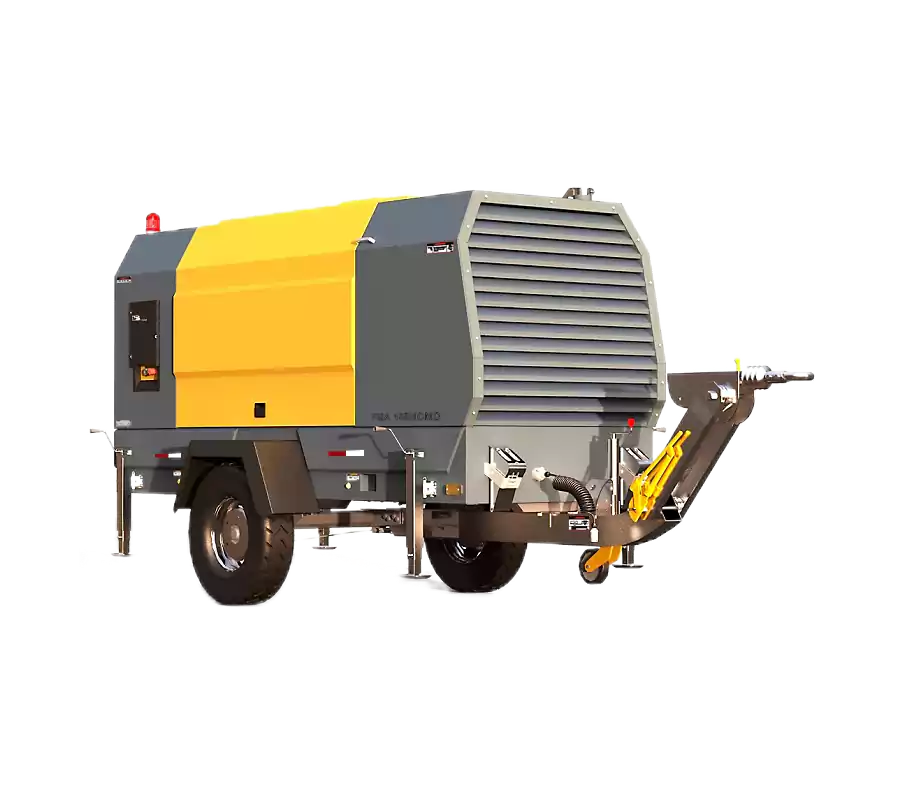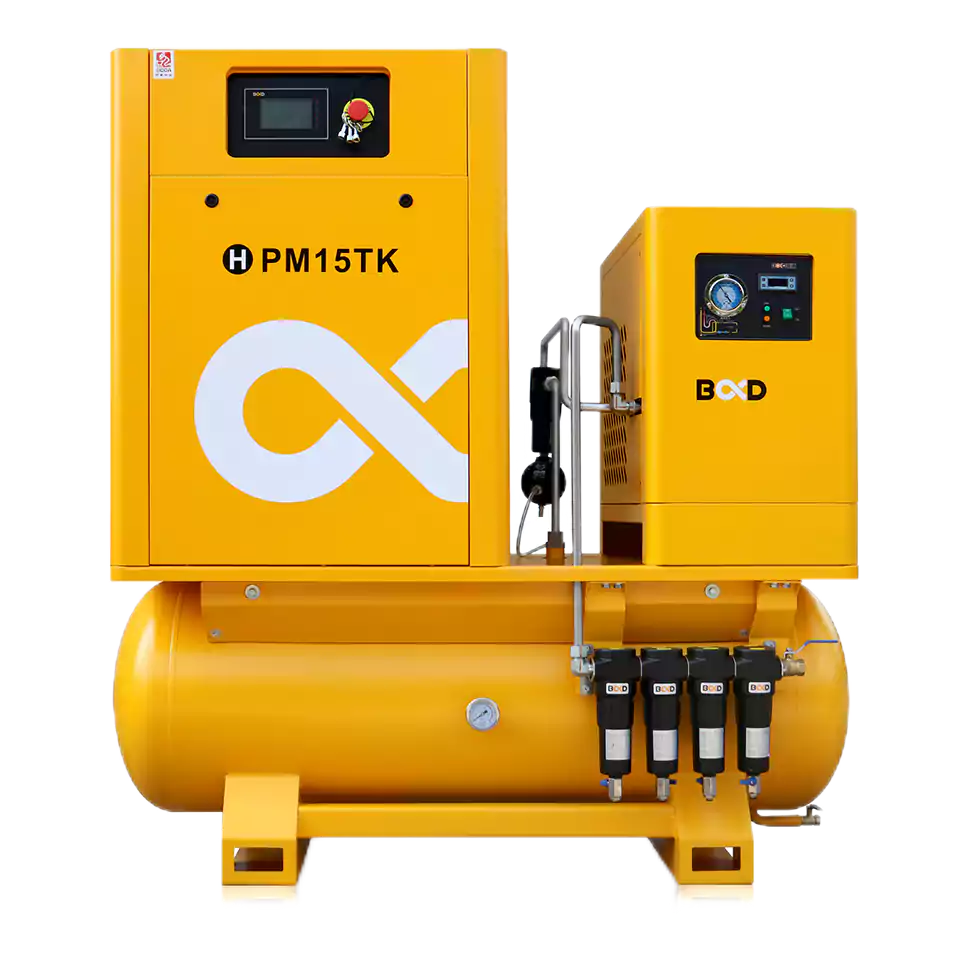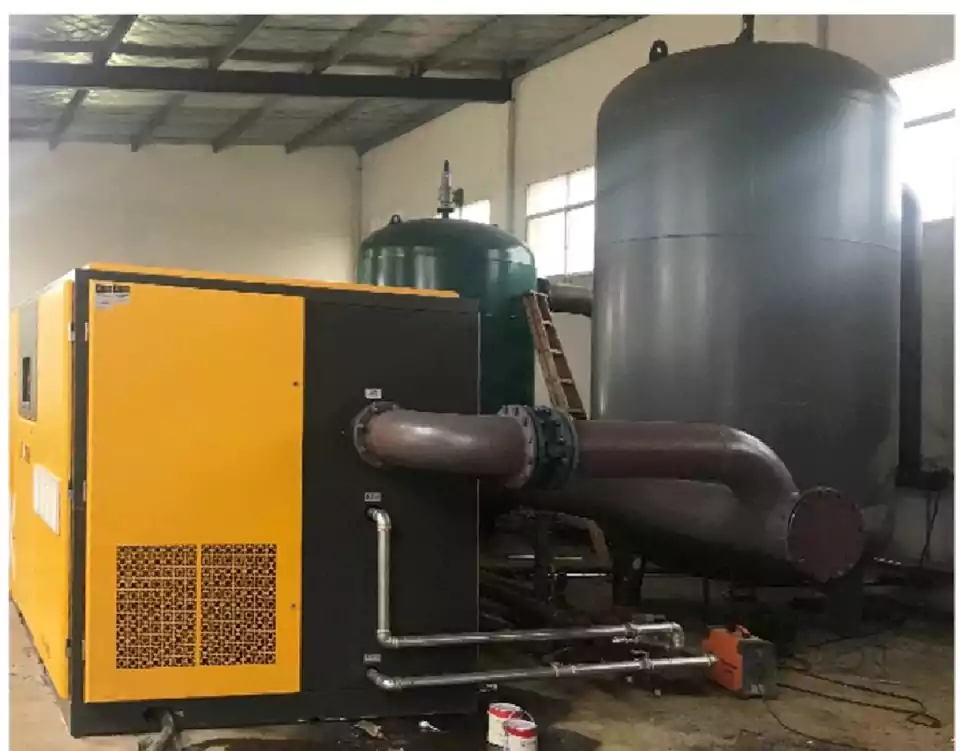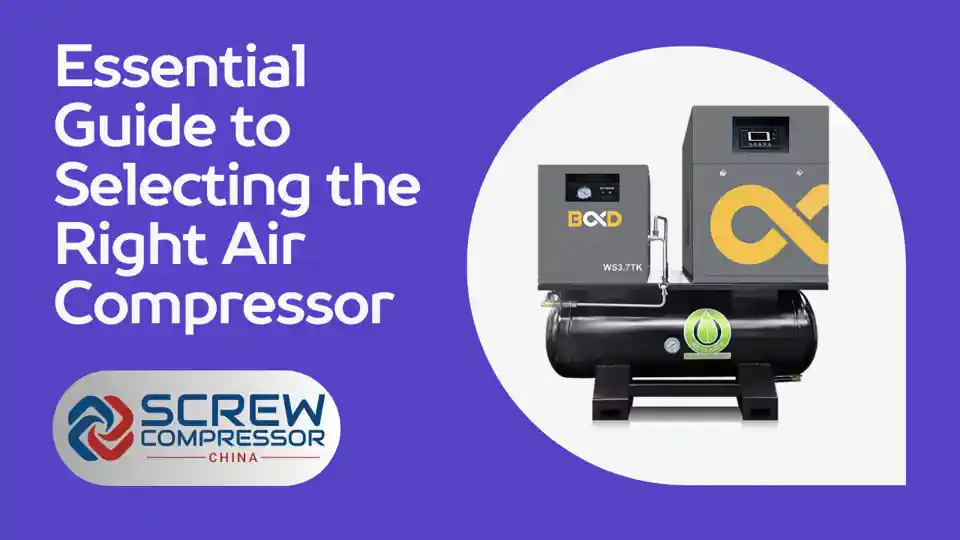Overview of Air Compressor Types
Portable Air Compressors
Portable air compressors are highly versatile and suitable for various applications, from inflating tires to powering pneumatic tools. Models like the PCP Air Rifle Pump exemplify convenient, lightweight solutions for on-the-go air supply.
Portable air compressors come in a range of sizes and capacities to suit different needs. Smaller units, often called pancake compressors due to their flat, round tank design, are ideal for home use and light-duty tasks. These compact models typically have tanks ranging from 1 to 6 gallons and deliver around 0.5 to 4.5 CFM (cubic feet per minute) at 90 PSI.
Larger portable compressors, sometimes referred to as wheelbarrow or pontoon compressors, feature more substantial tanks (up to 20 gallons or more) and higher CFM ratings. These models are better suited for professional use, such as powering multiple air tools simultaneously on a job site.
Many also include features like oil-free pumps, which reduce maintenance requirements, and built-in handles and wheels for easy transport. When choosing a portable air compressor, consider factors such as the types of tools you’ll be using, the required air pressure and volume, noise level, and portability.
Some models offer additional features like multiple couplers for connecting several tools at once, built-in storage for accessories, and digital displays for monitoring performance.

Industrial Air Compressors
For more demanding environments, industrial air compressors offer robust performance and durability. Whether for continuous operation in manufacturing plants or heavy-duty applications, these units are designed to meet rigorous industrial standards.
Industrial air compressors are built to handle high-volume, continuous-duty cycles in harsh conditions. They typically feature larger horsepower motors, higher air pressure and CFM ratings, and more durable components compared to portable models.
Tank sizes can range from 60 gallons to several hundred gallons, depending on the application. Common types of industrial air compressors include rotary screw, reciprocating (piston), and centrifugal compressors.
Rotary screw compressors are known for their efficiency, reliability, and low maintenance requirements, making them a popular choice for many industrial applications. Reciprocating compressors, while less efficient than rotary screw models, are well-suited for intermittent use and can achieve higher pressure levels.
Centrifugal compressors are designed for high-volume, continuous operation and are often used in large-scale industrial processes. When selecting an industrial air compressor, it’s essential to consider factors such as the required air pressure, volume, and quality, as well as the operating environment, energy efficiency, and maintenance needs.
Many industrial compressors offer advanced features like variable speed drives, heat recovery systems, and remote monitoring capabilities to optimize performance and efficiency.
Specialized Air Compressors
Certain applications require specialized compressors, like those with a 200 gallon or larger tank capacity, providing ample air for extended use without frequent stops to recharge.
Specialized air compressors are designed to meet unique requirements in various industries, such as medical, dental, food and beverage, and oil and gas. These compressors often feature additional filtration, drying, and purification systems to ensure the air quality meets specific standards for the intended use.
For example, medical and dental air compressors must provide clean, dry, and oil-free air to power equipment and tools safely. These units typically include multiple stages of filtration, desiccant dryers, and air quality monitoring systems to maintain the required air purity levels.
In the food and beverage industry, specialized compressors are used for various applications, such as pneumatic conveying, packaging, and cleaning. These compressors often feature oil-free designs, stainless steel components, and advanced filtration to prevent contamination and ensure compliance with food safety regulations.
Oil and gas applications require compressors that can handle harsh environments, high pressures, and potentially explosive atmospheres. Specialized compressors for this industry often include features like explosion-proof motors, corrosion-resistant materials, and advanced safety controls to mitigate risks and ensure reliable operation.
When choosing a specialized air compressor, it’s crucial to work with a knowledgeable supplier who understands the specific requirements of your industry and application. They can help you select a compressor with the appropriate features, certifications, and performance characteristics to meet your needs while ensuring compliance with relevant regulations and standards.

Key Features to Consider
Compressor Type and Capacity
Understanding the specific needs of your operation—whether needing a horizontal tank for stability or a high-capacity vertical option—is crucial in selecting the right compressor.
When choosing an air compressor, one of the most important factors to consider is the type and capacity that best suits your application. The compressor type refers to the mechanism used to compress the air, while capacity relates to the amount of air the compressor can deliver at a given pressure.
The most common types of air compressors are:
- Reciprocating (piston) compressors: These compressors use pistons to compress air, making them a cost-effective option for intermittent use and smaller applications. They are available in single-stage and two-stage designs, with two-stage models offering higher pressure capabilities.
- Rotary screw compressors: These compressors use two meshing rotors to compress air continuously. They are known for their efficiency, reliability, and low maintenance requirements, making them ideal for industrial applications with constant air demand.
- Centrifugal compressors: These compressors use a rotating impeller to compress air and are designed for high-volume, continuous operation. They are often used in large-scale industrial processes and power generation applications.
Capacity is typically measured in cubic feet per minute (CFM) at a specific pressure, usually 90 PSI for industrial applications. To determine the required capacity, consider the air consumption of the tools and equipment you’ll be using simultaneously.
It’s essential to choose a compressor with a higher CFM rating than your total air demand to ensure adequate performance and prevent overworking the compressor. Tank size is another important consideration, as it determines the compressor’s ability to store compressed air and maintain pressure during periods of high demand.
Larger tanks allow for longer tool run times and less frequent cycling, which can extend the life of the compressor. When selecting a compressor type and capacity, also consider factors such as the available space, power supply, noise level, and maintenance requirements.
Consulting with a compressed air professional can help you make an informed decision based on your specific needs and application.
Technology and Efficiency
Modern compressors like the variable speed drive rotary screw compressor adapt their operation to demand, significantly reducing energy consumption and operational costs over time.
Advancements in air compressor technology have led to significant improvements in efficiency, performance, and cost savings. One of the most notable developments is the introduction of variable speed drive (VSD) technology in rotary screw compressors.
Traditional fixed-speed compressors operate at a constant speed, regardless of the air demand. This can lead to wasted energy and increased wear on the compressor, as it cycles between full load and no load conditions.
In contrast, VSD compressors automatically adjust their motor speed to match the air demand, delivering only the required amount of compressed air at any given time. By operating at lower speeds during periods of reduced demand, VSD compressors can achieve significant energy savings, often in the range of 30-50% compared to fixed-speed models.
This not only reduces operational costs but also helps to minimize the compressor’s environmental impact. In addition to energy savings, VSD compressors offer several other benefits:
- Reduced wear and tear: By eliminating the constant starting and stopping associated with fixed-speed compressors, VSD models experience less mechanical stress, leading to longer service life and reduced maintenance requirements.
- Improved air quality: VSD compressors maintain a more consistent pressure level, which can help to improve air quality by reducing moisture and contaminants in the compressed air system.
- Enhanced process control: The ability to precisely match air supply to demand allows for better control over production processes, improving product quality and consistency.
- Lower noise levels: As VSD compressors operate at lower speeds during periods of reduced demand, they generate less noise, contributing to a more pleasant work environment.
When evaluating the efficiency of an air compressor, it’s essential to consider factors beyond the initial purchase price. Life-cycle costs, which include energy consumption, maintenance, and repair expenses over the compressor’s lifetime, provide a more accurate picture of the total cost of ownership.
Investing in a high-efficiency compressor with advanced features like VSD technology can lead to significant long-term savings and a faster return on investment.

Maintenance and Lifespan
Opting for a compressor with accessible parts and straightforward maintenance can reduce long-term costs and extend the unit’s service life. Regular servicing ensures optimal performance and prevents costly downtime.
Proper maintenance is crucial for ensuring the longevity, reliability, and efficiency of an air compressor. By choosing a compressor with easily accessible components and a straightforward maintenance schedule, you can minimize downtime and reduce long-term costs associated with repairs and replacements.
Here are some key considerations for compressor maintenance and lifespan:
- Regular service intervals: Follow the manufacturer’s recommended service schedule, which typically includes tasks such as changing air filters, oil filters, and lubricants, as well as inspecting and replacing wear parts like belts, seals, and valves.
- Lubrication: For oil-lubricated compressors, use the recommended oil type and maintain proper oil levels to ensure adequate lubrication and prevent premature wear. Oil-free compressors eliminate the need for oil changes but may require more frequent replacement of other components.
- Air filters: Clean or replace air filters regularly to maintain air quality and prevent contaminants from entering the compressor. Clogged filters can restrict airflow, reducing efficiency and potentially causing damage to the compressor.
- Condensate management: Regularly drain moisture from the air tank and install appropriate dryers and filters to remove moisture and contaminants from the compressed air system. Excess moisture can lead to corrosion, reduced air quality, and damage to downstream equipment.
- Cooling system: Ensure the compressor’s cooling system is functioning properly, with clean heat exchangers and adequate ventilation. Overheating can cause premature failure of components and reduce the compressor’s lifespan.
- Leak detection and repair: Regularly inspect the compressed air system for leaks, which can waste energy and reduce performance. Promptly repair any leaks to maintain efficiency and prevent further damage.
- Recordkeeping: Maintain accurate records of maintenance tasks, repairs, and operating conditions. This information can help identify potential issues, optimize maintenance schedules, and support warranty claims if necessary.
By following a comprehensive maintenance program and addressing issues promptly, you can extend the lifespan of your air compressor and minimize the risk of unexpected breakdowns. Regularly serviced compressors not only last longer but also operate more efficiently, saving energy and reducing operating costs over time.
When selecting an air compressor, look for models with features that simplify maintenance, such as easy-to-access service points, quick-release panels, and clear labeling of components. Some compressors also offer advanced monitoring systems that can alert you to potential issues and provide guidance on maintenance tasks, helping you stay ahead of potential problems and maximize the compressor’s lifespan.
Frequently Asked Questions
What is the best type of air compressor for home use?
For most home applications, a portable or pancake compressor is sufficient. These are ideal for light tasks such as inflating tires and using basic air tools.
When choosing an air compressor for home use, consider the following factors:
- Portability: Portable compressors, such as pancake or hotdog models, are compact and lightweight, making them easy to move around your workspace as needed.
- Noise level: If you plan to use the compressor in a residential setting, opt for a model with lower noise output to avoid disturbing neighbors or family members. Many modern compressors feature quiet operation, with noise levels around 60-70 decibels.
- Power source: Electric-powered compressors are the most common choice for home use, as they are convenient and do not produce exhaust fumes. However, if you need to use the compressor in areas without easy access to electrical outlets, consider a gas-powered model.
- Tank size and CFM: For most home applications, a compressor with a tank size of 1-6 gallons and an air delivery of 0.5-4.5 CFM at 90 PSI should be sufficient. This will allow you to power common tools like nail guns, staplers, and small impact wrenches.
- Oil-free vs. oil-lubricated: Oil-free compressors are generally lower maintenance and better suited for intermittent use, making them a good choice for home applications. However, oil-lubricated compressors tend to be more durable and efficient for heavy-duty use.
Some popular air compressor options for home use include:
- Pancake compressors: Models like the Porter-Cable C2002 or the Bostitch BTFP02012 offer compact size, low noise, and adequate power for most home tasks.
- Hotdog compressors: The Makita MAC210Q or the California Air Tools 8010 are quiet, lightweight, and offer slightly larger tank sizes than pancake models.
- Portable oil-lubricated compressors: For more demanding home projects, models like the Rolair JC10 or the Makita MAC2400 provide higher CFM and durability while still being portable.
Ultimately, the best air compressor for your home will depend on your specific needs and the types of projects you plan to undertake. Consider your budget, the tools you’ll be using, and the available space in your workshop when making your decision.
How often should I service my air compressor?
Service frequency depends on usage intensity, but generally, it is recommended to check compressors every 500-1000 operating hours for basic maintenance such as oil and filter changes.
The recommended service frequency for an air compressor can vary depending on factors such as the compressor type, operating conditions, and usage intensity. However, as a general guideline, most manufacturers suggest performing basic maintenance tasks every 500-1000 operating hours.
Here’s a more detailed breakdown of typical service intervals:
- Daily checks:
- Check oil level and condition (for oil-lubricated compressors)
- Inspect for any visible leaks or damage
- Check air filter cleanliness
- Weekly checks:
- Inspect belts for wear, tension, and alignment
- Check safety valves and pressure gauges for proper operation
- Clean coolers and heat exchangers
- Monthly checks:
- Tighten bolts and fittings as needed
- Check for unusual vibration or noise
- Inspect hoses and couplings for wear or damage
- Annual or semi-annual maintenance:
- Change oil and oil filter (for oil-lubricated compressors)
- Replace air filter
- Inspect and clean check valves, pressure switches, and other control components
- Lubricate motor bearings (if applicable)
- Test safety shutdown systems
- Extended maintenance (every 2-5 years, depending on compressor type and usage):
- Replace wear parts such as valves, seals, and bearings
- Perform a full system inspection and overhaul
It’s essential to consult your compressor’s user manual for specific maintenance recommendations, as these can vary depending on the model and manufacturer. Some compressors may have longer or shorter service intervals based on their design and intended use.
In addition to regular maintenance, it’s crucial to monitor your compressor’s performance and address any issues promptly. Signs of potential problems include increased noise or vibration, reduced air output, excessive moisture in the compressed air, or frequent cycling. By staying proactive with maintenance and repairs, you can maximize your compressor’s lifespan and ensure reliable, efficient operation.
Can I use an industrial air compressor for light tasks?
While it is possible to use an industrial air compressor for light tasks, it is generally not the most cost-effective or efficient solution. Industrial compressors are designed for heavy-duty, continuous operation and may have higher power consumption and maintenance requirements than smaller, portable compressors.
Using an industrial compressor for light tasks can lead to several issues:
- Energy waste: Industrial compressors typically have larger motors and higher CFM ratings than necessary for light-duty applications. Running these compressors for small tasks can result in significant energy waste and increased operating costs.
- Excessive wear and tear: Industrial compressors are built to handle demanding, continuous operation. Using them for intermittent, light-duty tasks can lead to more frequent cycling, which can cause unnecessary wear on components like motors, bearings, and valves.
- Noise and space constraints: Industrial compressors are often larger and louder than portable models, which can be problematic in smaller workshops or residential settings.
- Higher initial investment: Purchasing an industrial compressor for light tasks can be a significant upfront expense compared to buying a smaller, more suitable compressor for the intended application.
Instead of using an industrial compressor for light tasks, it’s more practical and economical to choose a compressor that is appropriately sized for your needs. Portable compressors, such as pancake or hotdog models, are specifically designed for light-duty applications and offer several benefits:
- Lower energy consumption and operating costs
- Compact size and portability
- Quieter operation
- Lower initial investment
- Easier maintenance and storage
By selecting a compressor that matches your requirements, you can ensure optimal performance, energy efficiency, and cost-effectiveness for your specific application.
Conclusion
Selecting the right air compressor is crucial for ensuring optimal performance, efficiency, and cost-effectiveness in your operations. By understanding your specific needs and the features of different compressor types, you can make an informed decision that will provide long-term benefits.
When choosing an air compressor, consider factors such as portability, power requirements, air demand, and the intended application. Portable compressors are ideal for light-duty tasks and home use, while industrial compressors are designed for heavy-duty, continuous operation in demanding environments. Specialized compressors cater to unique requirements in industries like medical, food and beverage, and oil and gas.

Investing in a compressor with advanced features, such as variable speed drive technology, can significantly reduce energy consumption and operating costs over time. Additionally, selecting a compressor with easy maintenance access and following a regular service schedule can extend the unit’s lifespan and prevent costly downtime.
Whether you opt for a simple unit for home use or a more robust system for industrial applications, taking the time to evaluate your needs and compare available options will help you make the best choice for your specific situation. By selecting the right air compressor and maintaining it properly, you can enjoy reliable, efficient performance for years to come.
Meta Description: Explore our comprehensive guide on choosing the best air compressor for your needs. Learn about portable, industrial, and specialized air compressors, and discover the key features and considerations for optimal performance and cost-efficiency. Make an informed decision and enjoy reliable, efficient compressed air for your applications.
